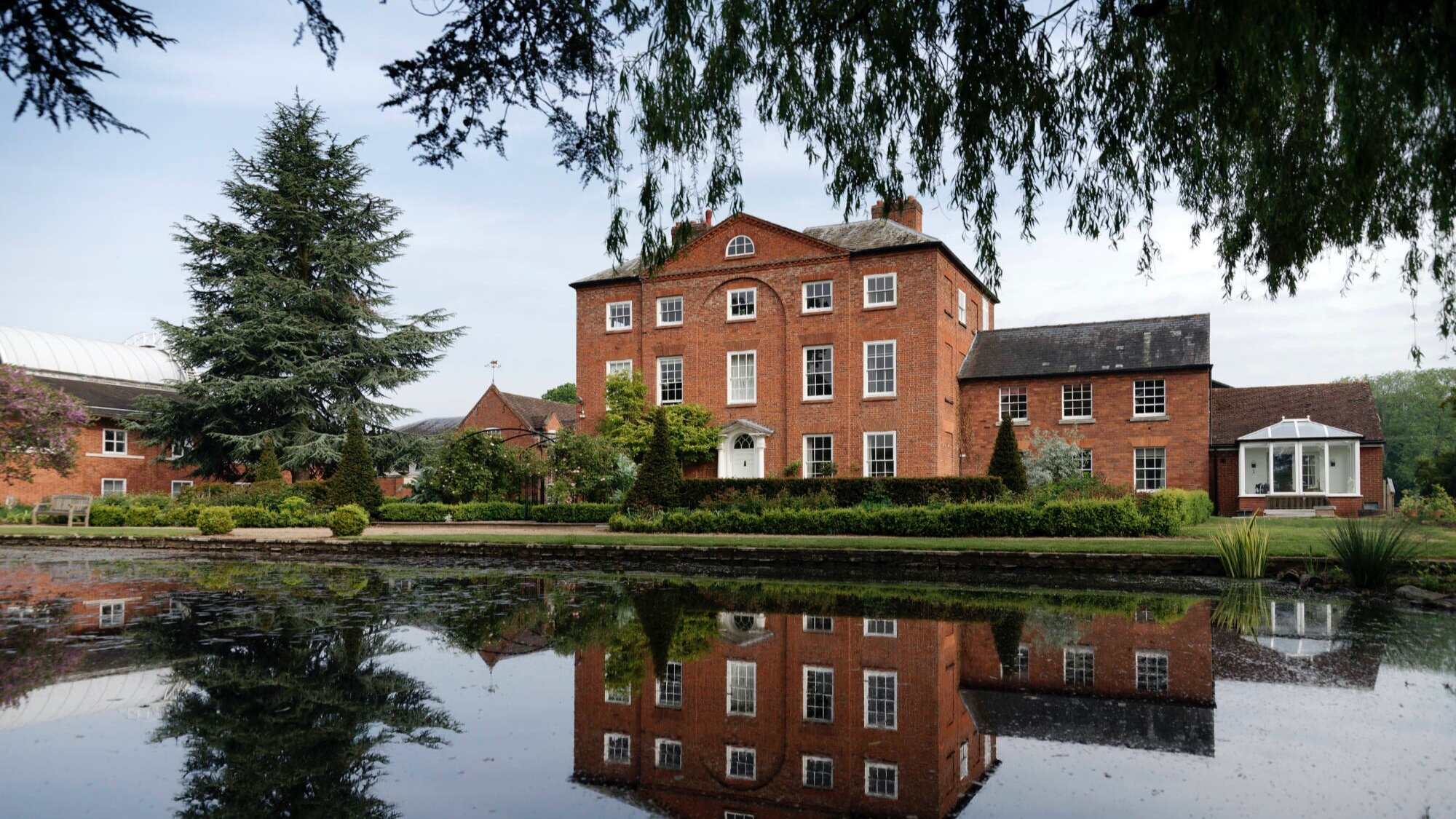
Adhisthana
Home for the Triratna Community worldwide and Sangharakshita’s burial place
Adhisthana is a place for the whole Triratna Order and movement. It is where people from all over the world can meet as one community, study the Dharma and practise meditation.
The original vision was Sangharakshita’s own and he believed it had a vital place in the future of our movement, offering a source of unity, of inspiration, and of authenticity. He saw it as the primary resource for keeping alive his particular presentation of the Dharma in accordance with which his disciples and disciples of disciples, are to practise.
This is not a simple or static thing, it is evolving as times change and as experience grows. Sangharakshita himself has spoken of his having four lineages that he has handed on to his disciples: a lineage of teachings, of practices, of responsibilities, and of inspiration. It is, above all, Adhisthana's responsibility to keep these four lineages alive and to hand them on to future generations.
The resident community consists of people holding movement-wide responsibilities (Chair of the Public Preceptors, International Order Convenors, and Convenor of the International Council) as well as those involved with all the infrastructure and practical needs of the regular events and visitors. This community serves to exemplify and share Sangharakshita’s presentation of a Dharma life through his four lineages.
Adhisthana was Sangharakshita’s home during his last years, until his death on 30th October 2018. During those years he lived in what was known as the Urgyen Annexe, an apartment of rooms and offices near the entrance to the whole site. His presence provided the ‘spiritual heart’ of Adhisthana, with many people making a special journey to visit him, and even in his 90s he would regularly meet with one or two visitors a day. In this way, Adhisthana became a place where people came to visit and connect with Sangharakshita.
Saddhanandi
The Burial Mound
If you stand in the Sangharakshita library, looking through the atrium’s high arch to the fields beyond, you will see a low grassed mound. Set in a mandala-like arrangement of pathways and gardens, this structure marks the burial site of Urgyen Sangharakshita.
According to legend, when the Buddha was asked what sort of monument should be built over his remains, he, in silence, simply folded three robes to create a squared base upon which he placed his overturned bowl.
It is this basic shape that has been endlessly elaborated upon in Buddhist monuments the world over. They not only serve as reliquaries for the remains of great Buddhist teachers, but stand as symbols for the sublime Awakening of the Buddha Shakyamuni.
In conversations with Sangharakshita during his later years, it was obvious that had no desire for an elaborate monument. If he did have a preference, he said, it would be for something simple, something that not only referenced the early Buddhist tradition but also that of the Neolithic and Bronze Age burial mounds of the British Isles (tumuli).
In early November 2018 over a thousand people attended Urgyen Sangharakshita’s funeral. After the burial, with the sun setting through rising clouds of incense, many quietly and continuously circumambulated the burial mound. That circumambulation continues, and will continue, both as an act of reverence to the Three Jewels and as an expression of profound respect and heartfelt gratitude for all that Sangharakshita has given to our precious Order and community.
Some months prior to his death, after viewing a copy of Blake’s engraving ‘Death’s Door’, Sangharakshita asked if I could push his wheelchair out to the burial site, then in an early stage of its construction. He wrote afterwards that he felt he was standing, like Blake’s old man, at his own ‘death’s door’. There was nothing morbid in this reflection. Far from it. As Bhante writes, “It was a fine summer morning and l was out in the open, enjoying the fresh air and the sight of the adjacent fields.”
Paramartha



